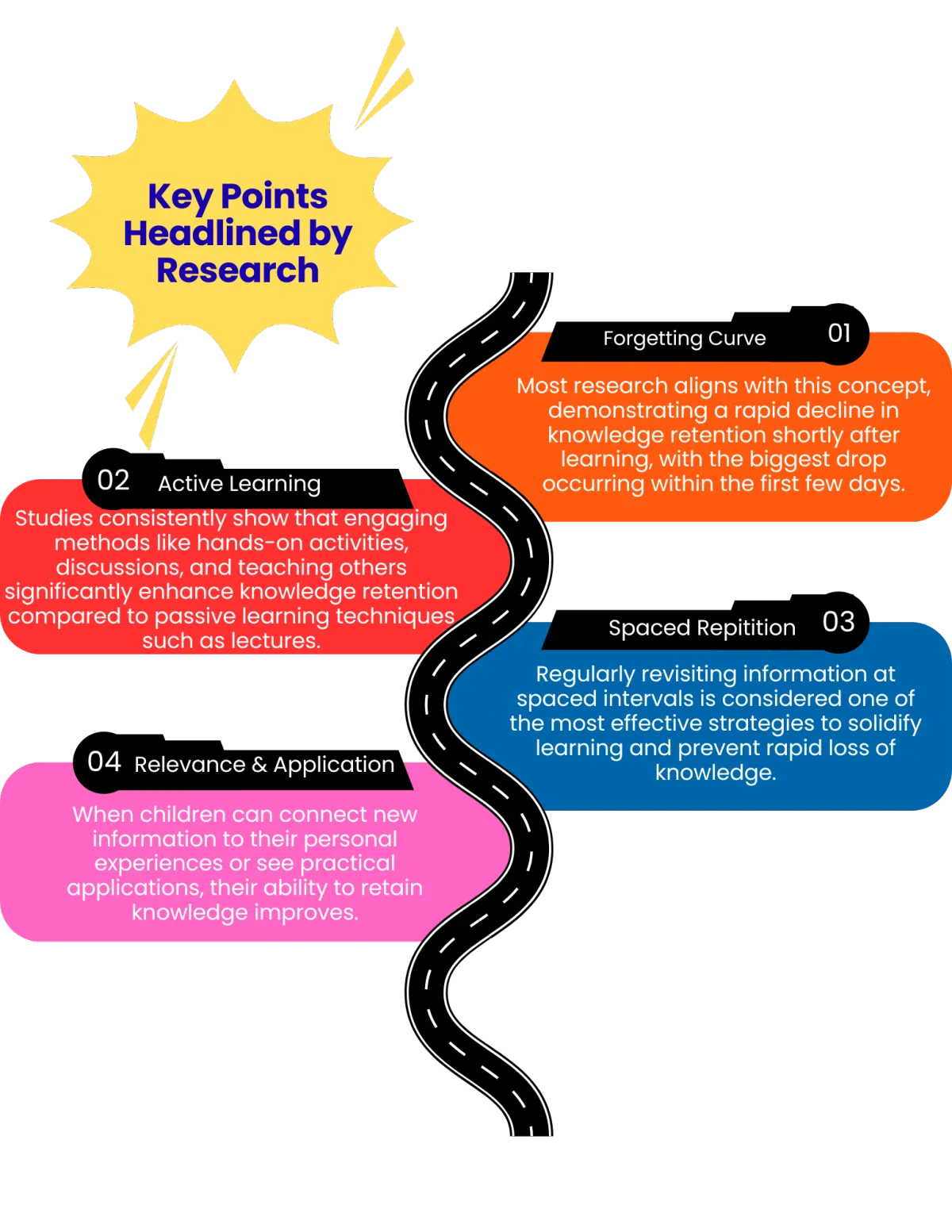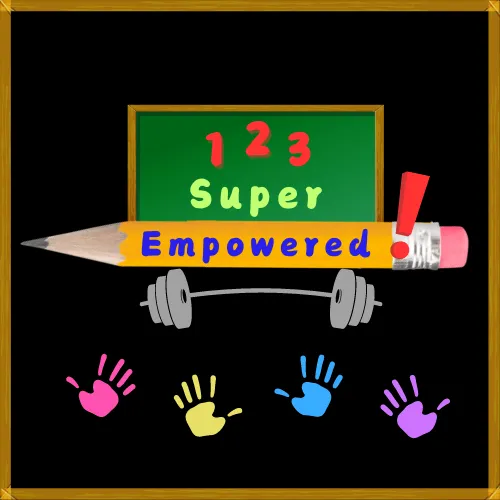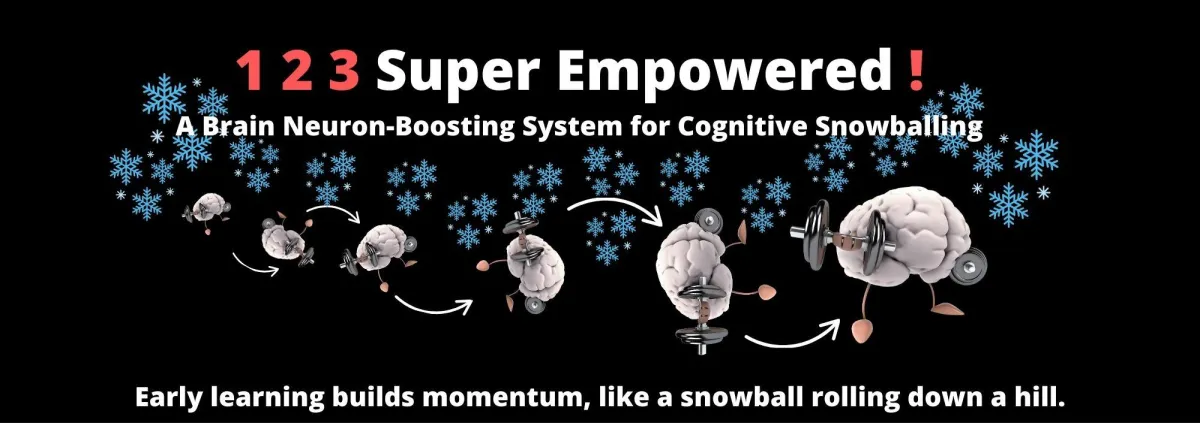Our Research!
Click the following links to learn the baby and childhood benchmarks in your area

Other important factors to consider:
• Age - Younger children may forget things at a faster rate compared to older children.
• Individual differences - Learning styles and motivation vary between children, impacting how well they retain information.
• Learning Environment - A supportive and engaging classroom environment can significantly influence knowledge retention.
Donahoe, S. (2001, August 31). The need for culturally rich experiences as children learn to read, write, draw, and communicate in American education today. ERIC. https://eric.ed.gov/?id=ED461132
Carnegie Corporation of New York. (2010). "Writing to read: Evidence for how writing can improve reading." https://www.carnegie.org/publications/writing-to-read-evidence-for-how-writing-can-improve-reading/
Hanson, K. L. (n.d.-a). Literacy development in Spanish-English bilingual children: "The role of Phonological Awareness and working memory." Purdue e-Pubs. https://docs.lib.purdue.edu/dissertations/AAI1535021/?utm_source=chatgpt.com
Park, D., Gunderson, E. A., Maloney, E. A., Tsukayama, E., Beilock, S. L., Duckworth, A. L., & Levine, S. C. (2023, July). "Parental intrusive homework support and math achievement: Does the child’s mindset matter?" Developmental psychology. https://pmc.ncbi.nlm.nih.gov/articles/PMC10835763/
Raynolds, L. B., López-Velásquez, A., & Valentín, L. E. O. (2016a, September 30). "Exploring English and Spanish rhyme awareness and beginning sound segmentation skills in prekindergarten Spanish-speaking English learners - reading and writing." SpringerLink. https://link.springer.com/article/10.1007/s11145-016-9696-y?utm_source=chatgpt.com
Soto, X. T. (n.d.). "Effects of a Spanish phonological awareness intervention on Latino preschoolers’ dual language emergent literacy skills." Digital Commons @ University of South Florida. https://digitalcommons.usf.edu/etd/7952/?utm_source=chatgpt.com
Bollinger, G. S., Booth, O., D’Aoust, MacArthur, McCutchen, & Olinghouse. (2012, June). "Teaching elementary school students to be effective writers." https://ies.ed.gov/ncee/wwc/Docs/PracticeGuide/WWC_Elem_Writing_PG_Dec182018.pdf
National Council for Special Education. (2024). "Visual Supports for an Inclusive Learning Environment."
Brady, M.C., Kelly, H., Godwin, J., Enderby, P., & Campbell, P. (2016). "Speech and language therapy for aphasia following stroke." Cochrane Database of Systematic Reviews, 6. DOI: 10.1002/14651858.CD000425.pub4.
Kearns, A., Whitley, E., Tannahill, C., & Ellaway, A. (2015). "Loneliness, social relations and health and well-being in deprived communities." Psychology, Health, Medical Journal. 20(3):332-44. doi: 10.1080/13548506.2014.940354.
Kristin Wiens (www.northstarpaths.com). Accessed: https://northstarpaths.com/wpcontent/uploads/2020/01/9-reasons-to-use-visuals-graphic-1-scaled.jpg 27/07/2023
Rutherford, M., Lahood-Kullberg, B., Baxter, J., Johnston, L., & Cebula, K. (2020). "Pupils’ views on visual timetables and labels in mainstream primary classrooms." "Good Autism Practice" (GAP), 21(2), 11-22.
The Communication Trust (2013). "Listen to us: A learning resource to support understanding of speech, language and communication needs." London: The Communication Trust.
Identifying and Teaching Students with Significant Reading Problems https://files.eric.ed.gov/fulltext/EJ1281523.pdf
Fletcher and Vaughn, “Response to Intervention.” For similar models, see G. Batsche et al., "Response to Intervention: Policy Considerations and Implementation" (Alexandria, VA: National Association of State Directors of Special Education, 2005); and J. Kovaleski, A. VanDerHeyden, and E. Shapiro, The RTI Approach to Evaluating Learning Disabilities (New York: Guilford Press, 2013).
Y. Petscher et al., "Screening for Dyslexia" (Washington, DC: US Department of Education, Office of Elementary and Secondary Education, Office of Special Education Programs, National Center on Improving Literacy, 2019).
L. Fuchs et al., “Bringing Data-Based Individualization to Scale: A Call for the Next-Generation Technology of Teacher Supports,” Journal of Learning Disabilities (forthcoming).
C. Greenwood, B. Horton, and C. Utley, “Academic Engagement: Current Perspectives on Research and Practice,” School Psychology Review 31, no. 3 (2002): 328–349; and
J. Stallings, R. Johnson, and J. Goodman, “Engaged Rates: Does Grade Level Make a Difference?,” Journal of Research in Childhood Education 1 (1986): 20–26.
D. Chard and E. Kameenui, “Struggling First-Grade Readers: The Frequency and Progress of Their Reading,” Journal of Special Education 34, no. 1 (2000): 28–38; and S. Vaughn et al., “Reading Instruction for Students with LD and EBD: A Synthesis of Observa- tion Studies,” Journal of Special Education 36, no. 1 (2002): 2–13.
See, for example, M. Lovett et al., “Treating the Core Deficits of Developmental Dyslexia: Evidence of Transfer of Learning After Phonologically- and Strategy-Based Reading Training Programs,” Developmental Psychology 30, no. 6 (1994): 805–822; and R. Morris et al., “Multiple-Component Remedia- tion for Developmental Reading Disabilities: IQ, Socioeconomic Status, and Race as Factors in Remedial Outcome,” Journal of Learning Disabilities 45, no. 2 (2012): 99–127.
M. Lovett, R. Barron, and J. Frijters, “Word Identification Difficulties in Children and Adolescents with Reading Disabilities: Intervention Research Findings,” in Handbook of Learning Disabilities, ed. H. Swanson, K. Harris, and S. Graham (New York: Guilford Press, 2013).
Morris et al., “Multiple-Component Remediation.”
C. Denton et al., “An Evaluation of Intensive Intervention for Students with Persistent Reading Difficulties,” Journal of Learning Disabilities 39, no. 5 (2006): 447–466.
CAST, Inc. (2024). The UDL guidelines. "CAST Universal Design for Learning Guidelines." https://udlguidelines.cast.org/
Crisco Ginny, "Universal Design for Learning for the Expository Reading and Writing Curriculum: Pedagogy and Practice for Teachers"
https://writing.csusuccess.org/system/files/udl_for_erwc_teachers_3_1.pdf
California Department of Education. “Chapter 9: Access and Equity.” English Language Arts/ English Language Development Framework for California Public Schools: Kindergarten Through Grade Twelve. California Department of Education, 2015, 878-936.
CAST. “Universal Design for Learning Guidelines Version 2.2 [Graphic Organizer].” CAST, 2018, udlguidelines.cast.org/binaries/content/assets/udlguidelines/udlg-v2- 2/udlg_graphicorganizer_v2-2_numbers-yes.pdf. Accessed 11 May 2018.
Dweck, Carol. “The Power of Believing You Can Improve.” YouTube, uploaded by TED Talks, 17 Dec. 2014, www.youtube.com/watch?v=_X0mgOOSpLU. Accessed 31 May 2017.
Fisher, Douglas, and Nancy Frey. Better Learning Through Structured Teaching: A Framework for the Gradual Release of Responsibility. ASCD, 2008.
Giangreco, Michael F. Illustrated by Kevin Ruelle. “Clearing a Path for People with Special Needs Clears the Path for Everyone.” Peytrals Publisher, 2002.
Meyer, Anne, David Rose, and David Gordon. "Universal Design for Learning: Theory and Practice." CAST Publishing, 2013.
Moore, Shelley. “Transforming Inclusive Education.” YouTube, uploaded by SSHRC-CRSH (Social Sciences and Humanities Research Council of Canada), 04 Apr. 2016. Accessed 11 July 2017.
Schaefer, Kevin. “ELA/ELD Framework Launch, Chapter 9: Access and Equity.” WestEd Center for Prevention and Early Intervention, 15 May 2015, slideplayer.com/slide/5375428/. Accessed 7 Sept. 2017.
Thousand, Jacqueline S., Richard A. Villa, and Ann I. Nevin. "Differentiating Instruction: Planning for Universal Design and Teaching for College and Career Readiness." 2nd ed., Corwin, 2015.
Yancey, Kathleen Blake, Liane Robertson, and Kara Taczak. "Writing Across Contexts: Transfer, Composition, and Sites of Writing." UP of Colorado State and Utah State UP, 2014.
Click the button to the left to view links to all of our research.

Video and sound by: Roman Parsonese and Aaron Sokoloff
Website created by:


